This topic has been sitting in my drafts for some time, and I felt there was no better time to publish it than in the wake of the copycat drama between pop phenom Doja Cat and metal band Chaver. On Wednesday, X (formerly Twitter) account Pop Crave, broke the news that both musicians who commissioned the visual artist Dusty Ray were not only releasing their upcoming albums on the same day, September 22, 2023, but with almost the same exact cover.
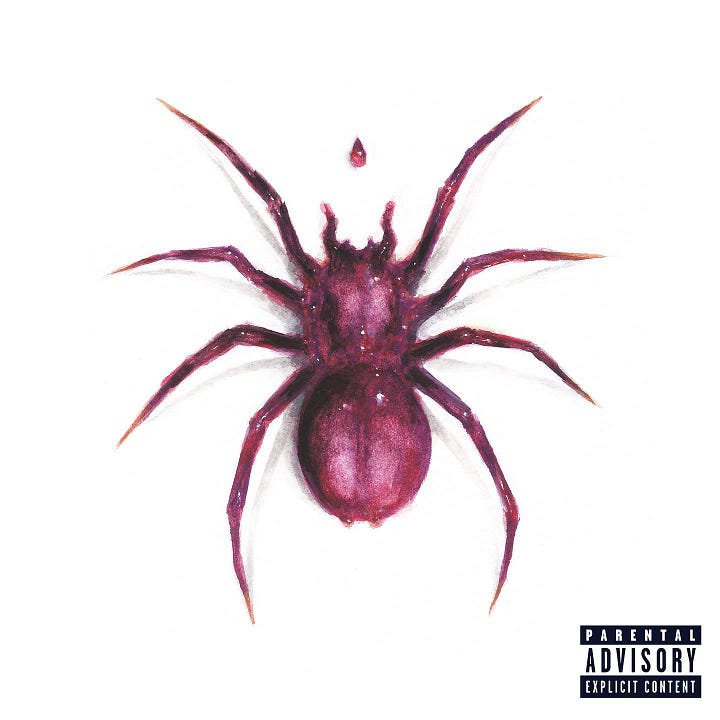

There’s the well-known saying that “nothing is original.” It references the fact that we as humans are constantly influenced by unacknowledged forces we encounter throughout our lives, including other works of art. When it comes to imitations throughout art history, the Pictures Generation in the 1970s-80s thrived off reappropriating mainstream imagery. American photographer Sherrie Levine appropriates prominent male artists’ works like Walker Evans and Marcel Duchamp by meticulously rephotographing and recreating their pieces in the name of patriarchal commentary. Richard Prince infamously blows up screenshots from his Instagram feed of other people’s photos and sells them for thousands upon thousands of dollars, famously battling with model Emily Ratajkowski.
On the flip side, there are artists who respectfully pay homage as part of their practice, like performance artist Martine Gutierrez with her ANTI-ICON and Indigenous Woman projects. In both works, Gutierrez reenacts multiple characters throughout history but through the lens of a multi-racial nonbinary transwoman. In an interview with The New York Times, the artist “acknowledges an undeniable adjacency to [Cindy] Sherman’s work and points as well to the examples of Britney Spears, Frida Kahlo, and Christina Aguilera.”
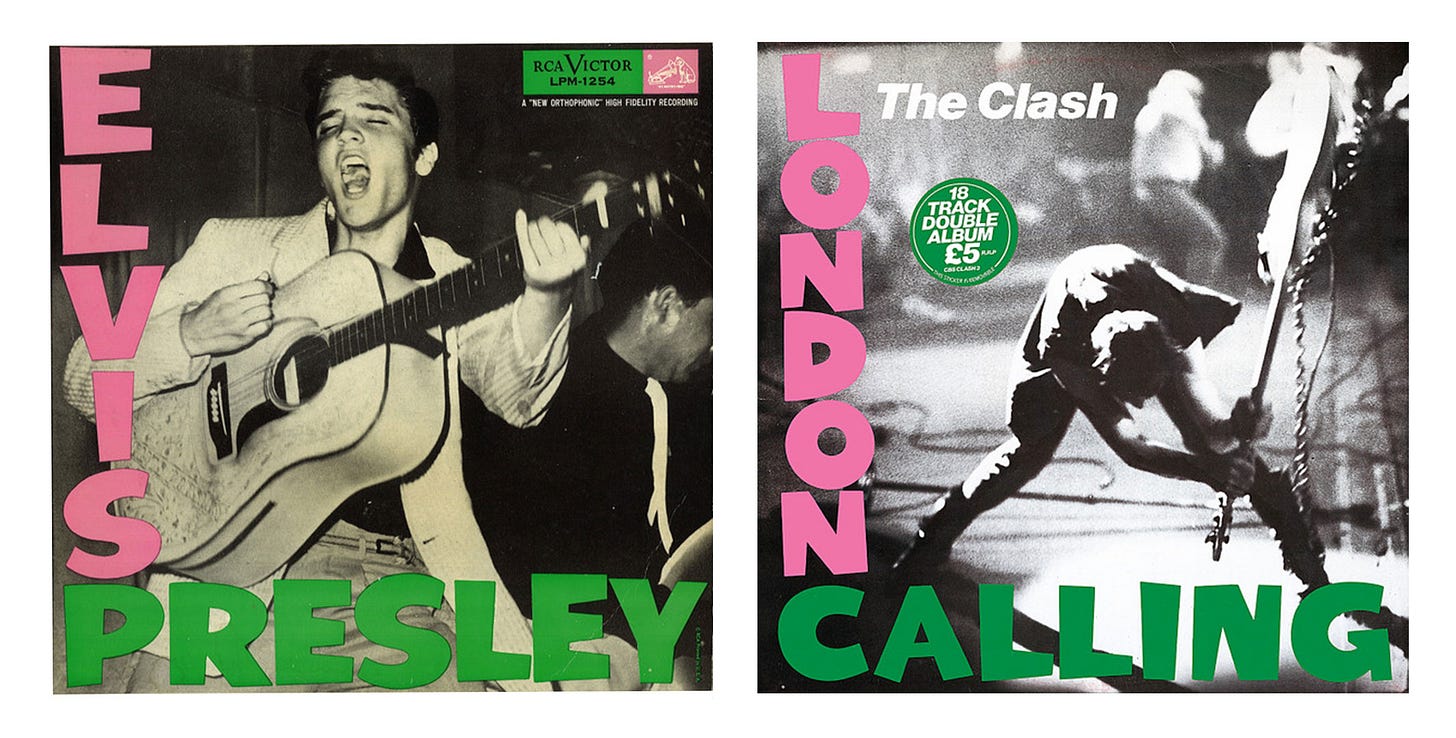
One of the first album covers, in my opinion, to appropriately pay homage is The Clash’s 1979 LP London Calling. Ray Lowry, the graphic designer for the album, directly copied and pasted the pink and green typography from Elvis Presley’s 1956 eponymous debut album. According to American Songwriter, “It was The Clash’s nod to the man who also broke the rules of rock ‘n’ roll.”
But when it comes to art theft in the form of album covers, blame is usually put on the more popular musician and their creative team due to budget and access. Take indie darling Weyes Blood’s 2022 release And In The Darkness, Hearts Aglow versus Beyoncé protege Chlöe’s 2023 album In Pieces. Natalie Mering (Weyes Blood) announced her fourth album in September of 2022, while Chloe Bailey revealed her cover art six months later in March of 2023.
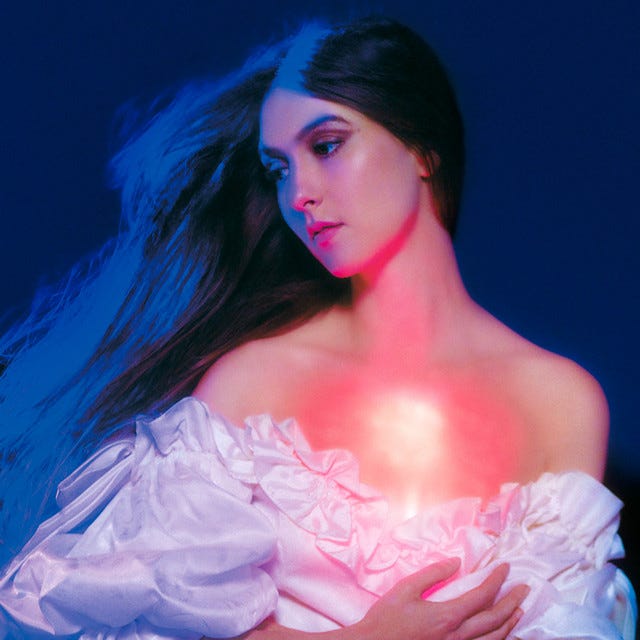
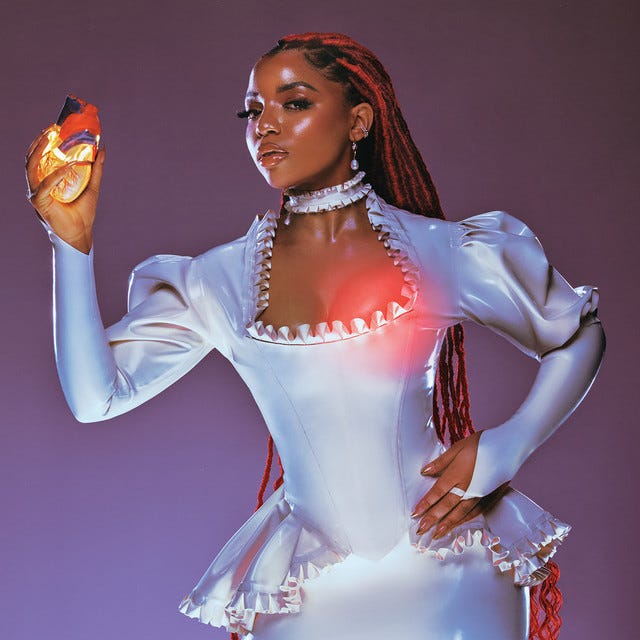
From the color palette to the pose, era of dress, and most noticeable of all, the glowing heart, it’s hard not to believe that no one on Chlöe’s creative team had ever come across Weyes Blood’s imagery. Upon her cover reveal on Instagram, Chlöe included a written statement. “I saw a photo of a porcelain doll 3 years ago, holding her heart just like this, and from then, I said this will be my album cover.” When looking at Weyes Blood’s last album cover for Titanic Rising, we see another glow beyond the flowing curtains, making Mering’s two covers fit cohesively together like a story flipping from one chapter to another. While looking at Chlöe’s discography, In Pieces stands out among Bailey’s covers.
But in the case of Doja, the bigger artist, and Chaver, the smaller group, the finger seems not to be pointed at Doja but at Dusty, the visual artist who created both covers. While Doja’s cover was announced two months later, it seems unlikely that her creative team would’ve hired the same painter to take another musician’s already existing album cover. Especially since Doja is known for her unique and eccentric red carpet looks that take hours to craft in order to make her stand out from the crowd explicitly.
Checking back in on Thursday, August 31st, Doja removed the original album announcement post from her Instagram and reposted it with an updated cover painted by the same artist, Dusty Ray. Stereogum pointed out that this isn’t the first time a visual artist has sold the same art to two musicians, highlighting the incident between the groups Fountains of Wayne and Flamingoes, and photographer Nick Waplington in 1996. Nevertheless, however, the copycat incident occurred, it for once might have benefitted the smaller artist and given them a larger fan base.
Find more covers blurring the line between homage and theft below:


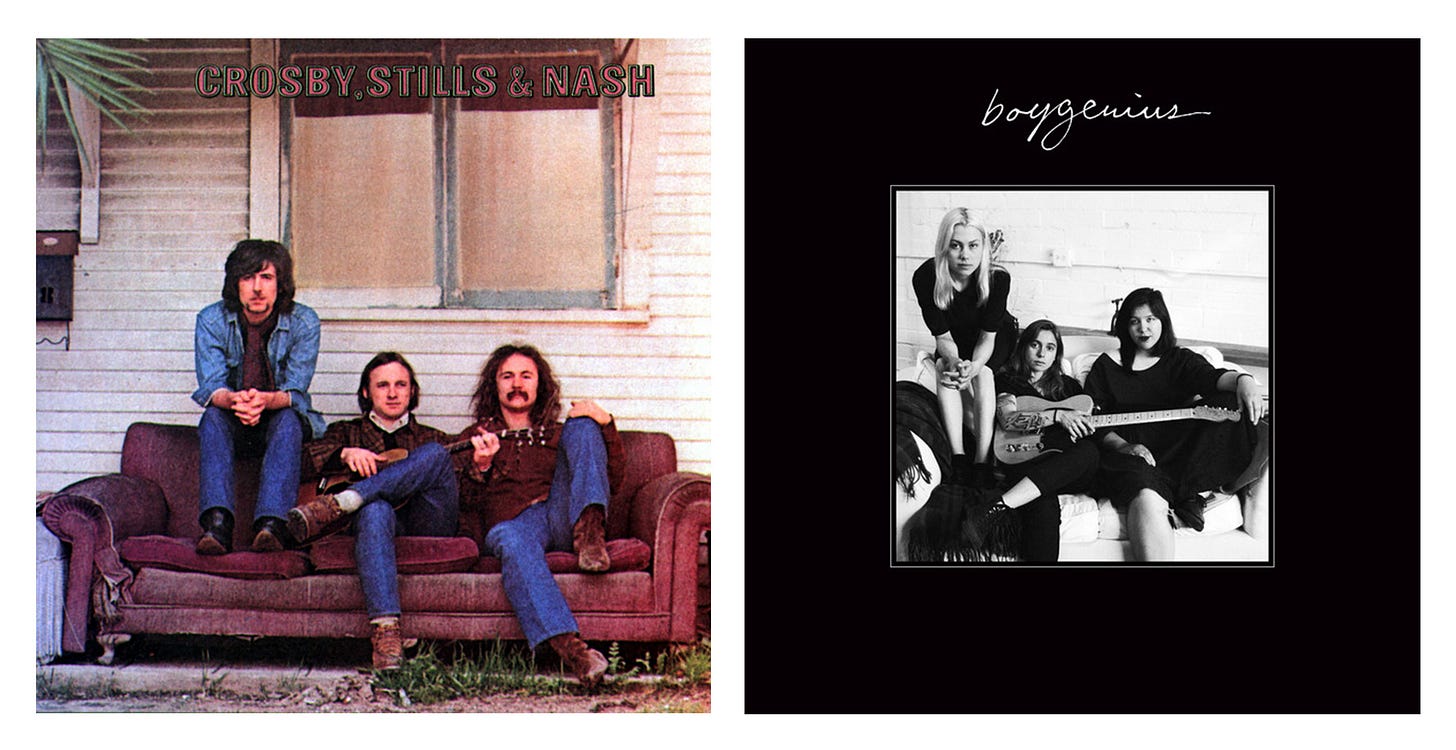
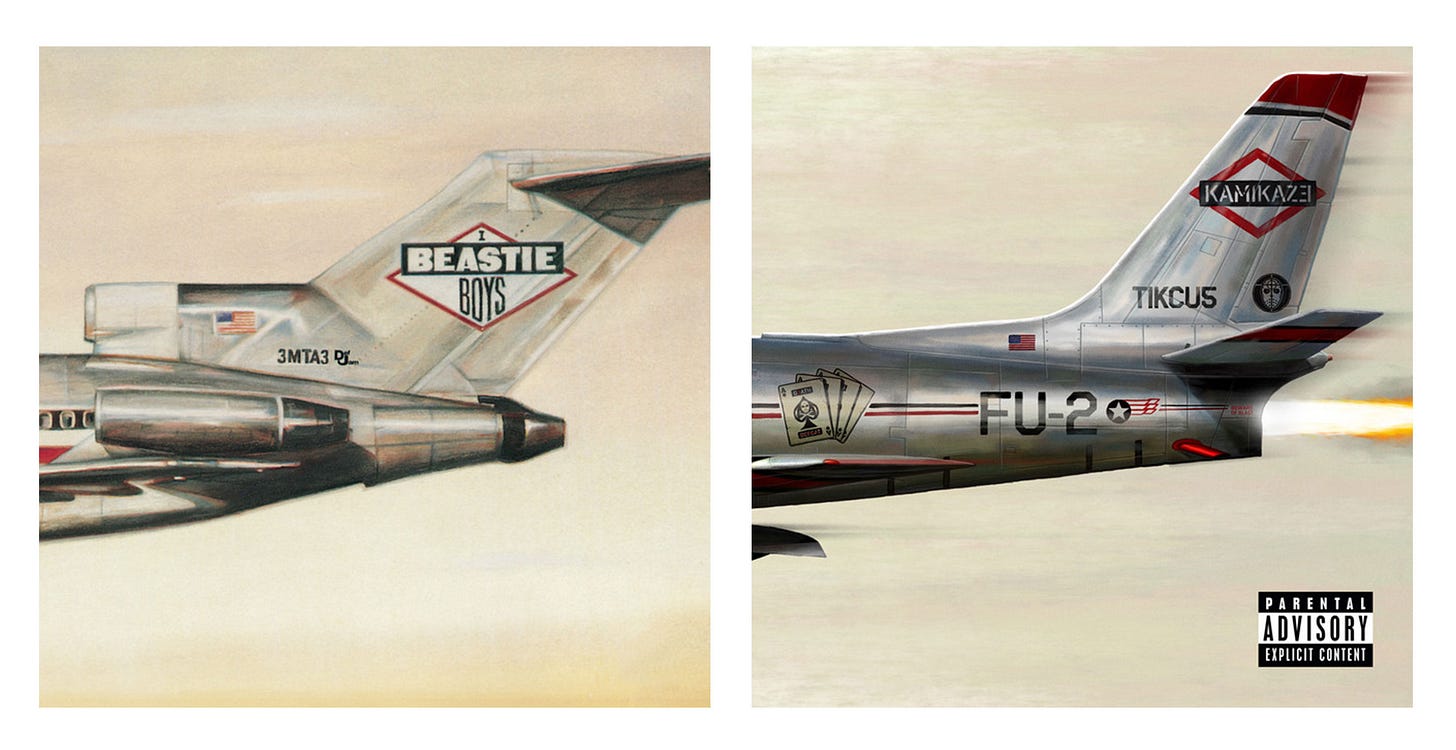
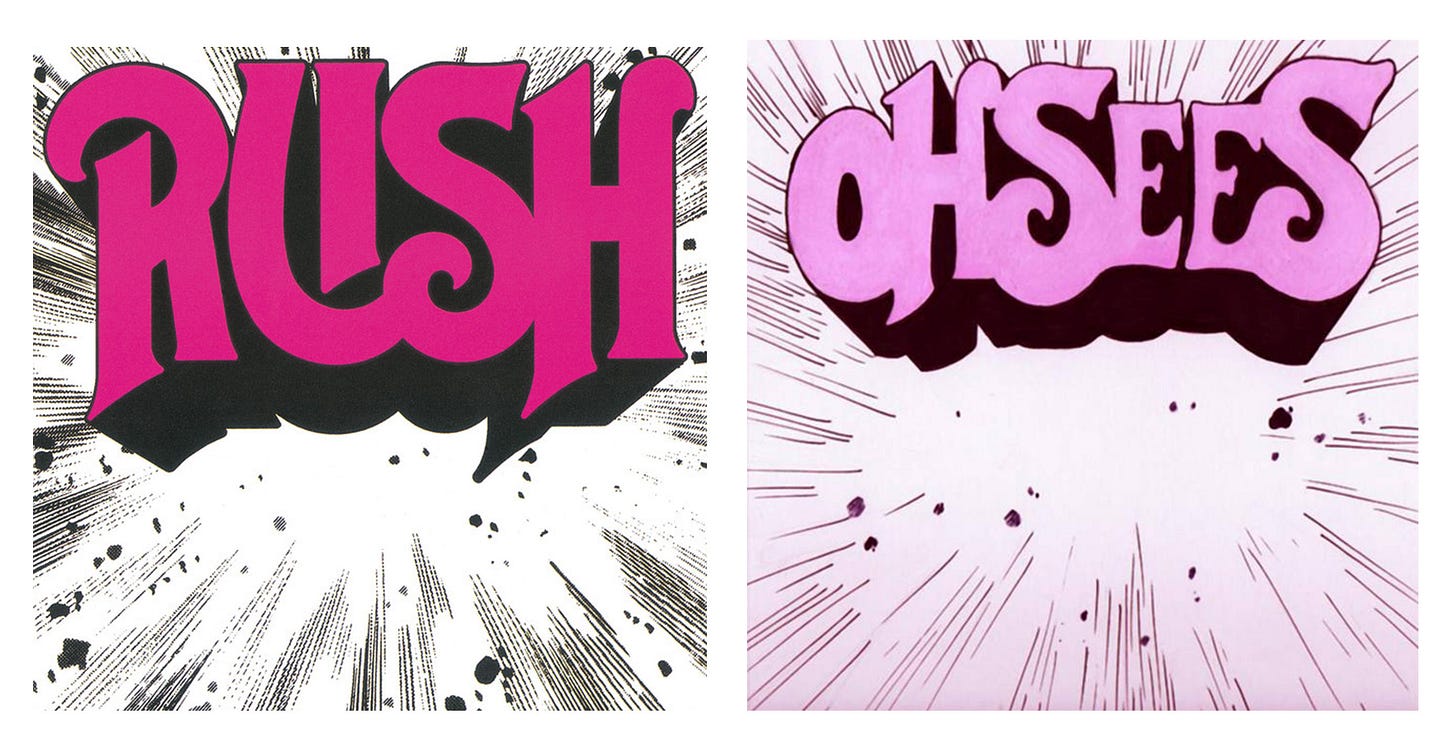
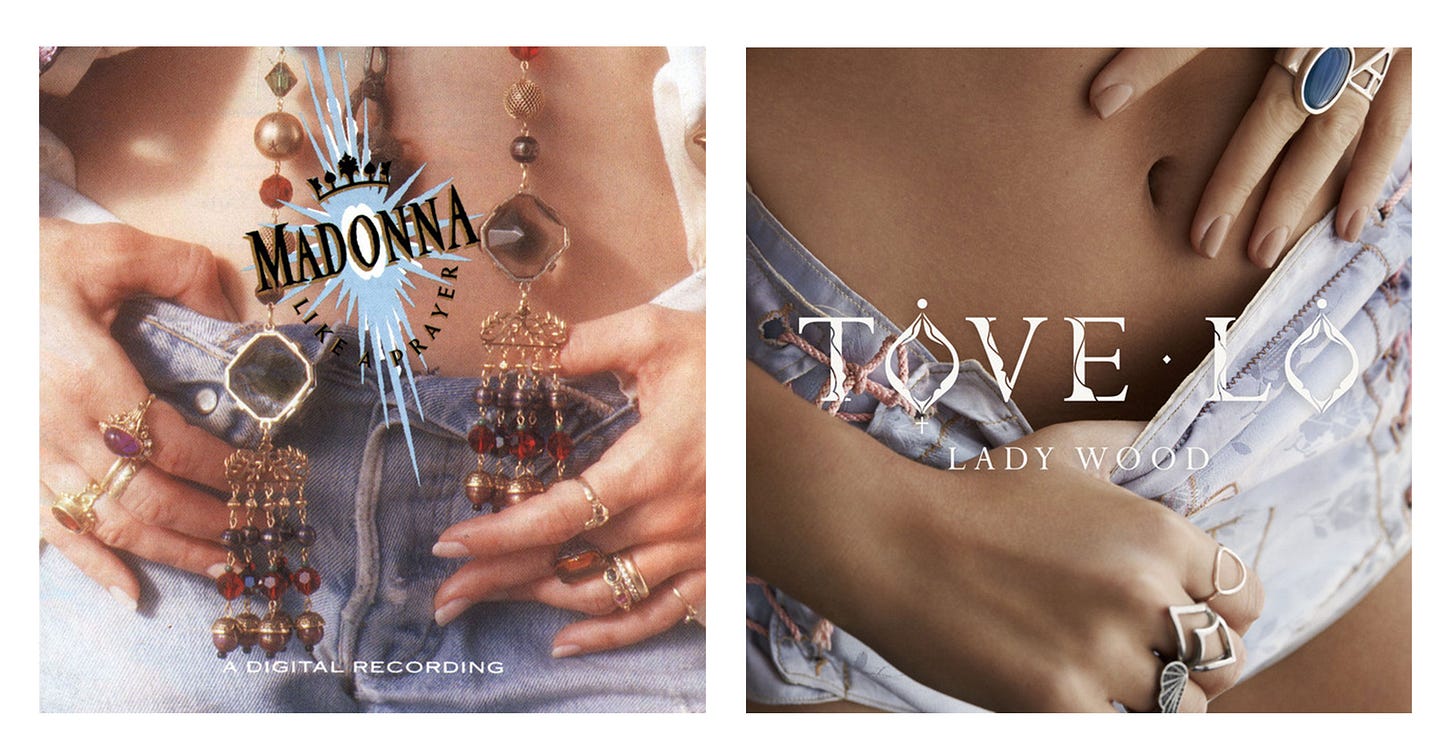
The Art of Cover Art is a free educational and inspirational resource. If you have $5/ month to spare, it would be very helpful in furthering my research. Or, if you think a friend might enjoy this newsletter, the best way to pay it forward is by sharing!




In my view, time is a big factor here - when there’s 20+ years between the two records, and especially when the original is a classic album, it’s very clearly homage. Also when the composition is almost identical, it’s clear the more modern artist is not trying to fool anyone. Presumably in most cases the original album or artist was a big influence on the artist paying homage.
But when there’s only a couple of years between them and the executions are somewhat different? (As in your Weyes Blood / Chloe example), then it gets murkier...
You could add Ween's "The Pod" and Leonard Cohen's "Greatest Hits"... or Bruce Springsteen's "The River" and Haruomi Hosono's "Hosono House" AND Mac Demarco's "2"
re: Dusty Ray — kinda shady to sell your art to two different artists to use for their album covers.